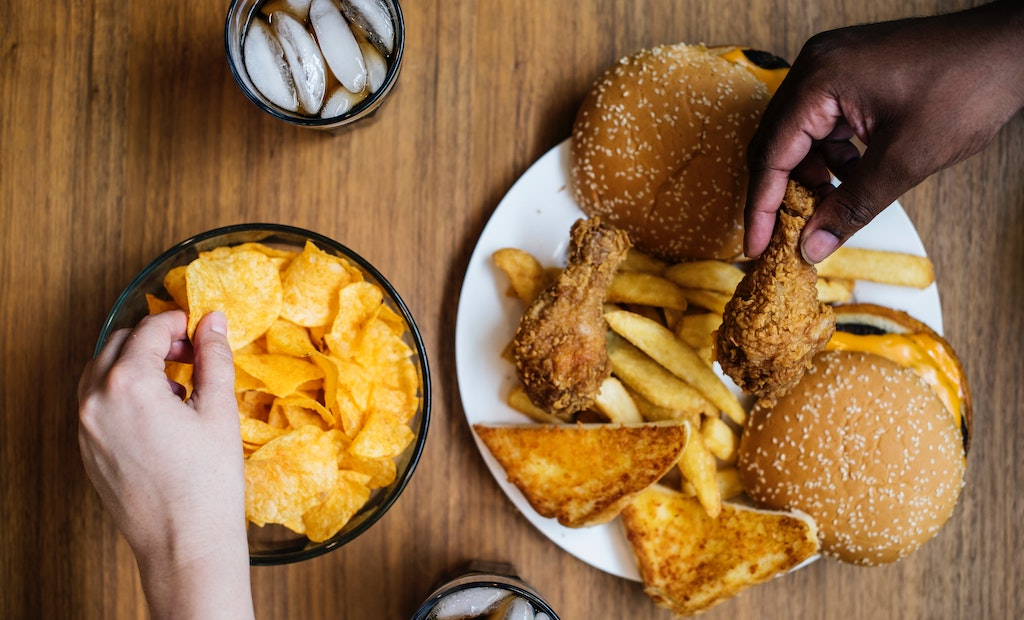Food addiction and obesity: Why the soft drinks tax just isn’t enough

With obesity rates soaring on both sides of the Atlantic Ocean compared to ten years ago, an increasing number of studies have been launched to understand the possible causes. Scientists have finally managed to demonstrate a strict correlation between obesity and food addiction.
The Business Standard claims that in the UK only a third of men now fall within the healthy weight range. In 2011 about 24 per cent of men and 26 per cent of women were classified as obese, compared to 13 per cent of men and 16 per cent of women in 1993, when the data was first collected.
Researchers from Yale’s Rudd Center for Food Policy and Obesity produced a “food addiction scale”. They proved that industrially processed sugar, fat and salt-laden food is biologically addictive.
Sugar stimulates the brain reward centres through the neurotransmitter dopamine, like other addictive drugs. PET scans demonstrated this effect and showed also that obese people and drug addicts have lower numbers of dopamine receptors, making them more likely to crave things that boost dopamine.
The problem with food addiction is related to the fact that food manufacturers refuse to release any information on how they put ingredients together to maximise the consumption of their foods.
The only way an average consumer can discover what they are eating is by reading an often incomplete and incomprehensible label on food packaging. Modern labels show clearly the calories intake, but they are often deceptive about the amount of sugar or salt they contain, referring to them in different ways (i.e. sodium instead of salt).
Dr David Kessler, in his book The End of Overeating, explains the science of how food is made into drugs by the creation of hyper-palatable foods that lead to neurochemical addiction.
The question is how our society got to the point to allow such harmful food production, that substitutes good old ingredients such as unrefined sugar with chemically synthesised ingredients.
Apparently, the problem began in 1971, when American President Nixon was facing re-election. Nixon needed to cut food prices in order to survive politically. He appointed Earl Butz, an agricultural expert, who pushed farmers in a new industrial-scale crop production: corn.
Corn quickly became the engine for sourcing massive quantities of cheap food, turning many American small farmers into multimillionaires within a global market almost overnight.
Intensive corn production determined a surplus by the mid-70s, which was used to create high fructose corn syrup (HFCS). This glucose-fructose syrup is a sweet, gloopy syrup, incredibly cheap compared to sugar, produced by separating fructose from corn.
HFCS soon became an ingredient of many industrially produced foods, silently increasing the amount of sugar that was entering our bodies.
HFCS started being used instead of sugar in many soft drinks by the mid-80s, as Hank Cardello, former head of marketing at Coca Cola, confirmed. HFCS did not show downsides at the time and obesity was far less on the minds of the then more active population.
Food Matters released their documentary Hungry for a Change, last year. The show exposed the dark side of the food industry’s addition of certain chemicals that can get you addicted and make you a perpetual customer.
It also demonstrated that the more sugar we eat, the more we want and the hungrier we become, because our cells don’t receive the specific nutrients they need to function but can only turn excess sugars into fat.
Dr Joseph Mercola, A New York Times best-selling author interviewed for the documentary, explained the dangerous effects of food additives such as monosodium glutamate (MSG) and sweeteners.
“MSG is added to 80 per cent of all flavoured foods,” he said. ”It excites the part of your brain that’s in charge of your fat programmes. It’s also used to fatten up mice for scientific study.”
Mercola stresses the importance of avoiding sweeteners (aspartame) and diet sodas altogether. Despite being calories free, diet sodas often combine aspartame and caffeine becoming the “perfectly addictive beverage”.
He said: “The combination of excitotoxins kill off your brain cells, but before doing that it will give you a buzz, inducing more drink consumption.”
Despite New York Mayor Michael Bloomberg’s plan to reduce soft drink super-sizing, and the UK’s George Osborne planning to introduce a 20p tax on sugary drinks in his budget on 20th March, these measures seem far from being able to break obesity and food addiction.
According to Dr Mark Hayman, who has a health blog on the Huffington Post, a combination of public and political actions would alter the default conditions in the environment that foster and promote addictive nutritional behaviour.
Subsidising the production of fruits and vegetables, building the real cost of industrial food into the price, and giving incentives for community support programmes, would eventually help people to make the right nutritional choices, avoiding, in the end, the obesity-food addiction loop.
Annalisa Ratti
























Facebook
Twitter
Instagram
YouTube
RSS